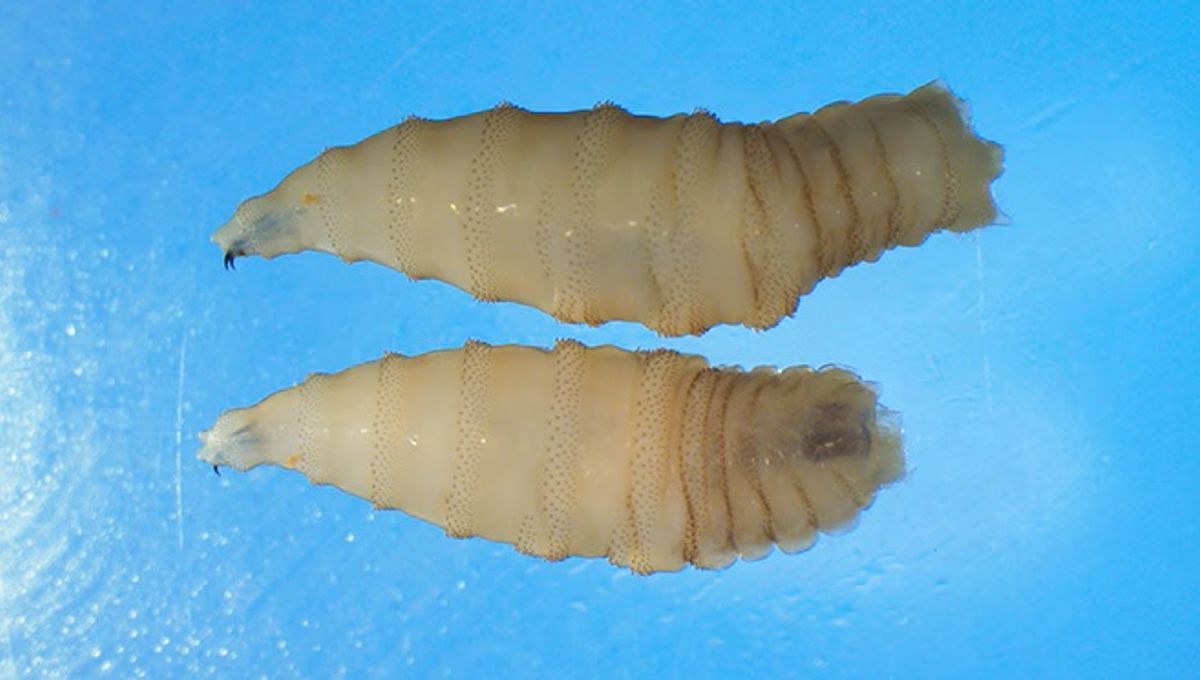
After a re-emergence sparked a national emergency in Costa Rica in February of last year, New World Screwworm (NWS) fly larvae (Cochliomyia hominivorax) have once again reared their tooth-covered heads, this time in southern Mexico – with the potential to cross the border into the US.
Despite being found in just one cow in southern Mexico, near the border of Guatemala, its presence breaks a 34-year-long period of eradication for the country, a resurgence that’s thought to have been spread through the illegal cattle trade in Central and South America. Now, almost 60 years after its eradication in the US, officials warn the NWS could be on its way north of the border.
“Illegal cattle trade in Mesoamerica, the southern border of North America extending to the Pacific coast of Central America, follows transboundary routes starting in Nicaragua and passing through Honduras and Guatemala, before infiltrating Mexico’s food supply chain and reaching as far as the US,” Jeremy Radachowsky, Wildlife Conservation Society’s Regional Director for Mesoamerica, said in a statement.
“This unregulated cross-border movement has created a rapid corridor for the parasite, allowing it to travel nearly 700 miles [1,126 kilometers] – from the Nicaragua-Honduras border to Catazajá, Mexico – in just two and a half months.”
Texas Parks and Wildlife Department (TPWD) has issued a statement warning residents of Southern Texas to be particularly vigilant for signs of NWS infections and to report any potential cases.
Clinical signs of NWS infection may include:
- Irritated or depressed behavior
- Loss of appetite
- Head shaking
- Smell of decaying flesh
- Presence of fly larvae (maggots) in wounds
- Isolation from other animals or people
What is a new world screwworm?
Screwworms, of which there are two species, are obligate parasites during their larval stages. The New World screwworm, or true screwworm, is indigenous to much of North and South America.
What makes the screwworm unusual and particularly dangerous is that, unlike most blowflies, screwworms prefer to lay their eggs on the wounds of living mammals as opposed to carrion. The screwworm fly will seek out any wound or orifice and will lay between 100 and 350 eggs around the edge of the opening.
In less than 24 hours, these eggs will hatch and burrow as a group downwards into the wound. The infestation spreads quickly throughout groups of animals as the smell from a larvae-infested wound is attractive to other egg-carrying females, drawing more screwworm flies to the area.
After about a week from hatching, the larvae, which have now grown from 2 millimeters (0.07 inches) to 1.5 centimeters (0.6 inches), will stop feeding and fall to the ground where they burrow and pupate. They emerge between seven and 60 days later, depending on the climate, to continue the cycle again.
Screwworm infestations are further complicated by the increased chance of different larval fly species entering the wound, increasing the chances of infection. If untreated, screwworm infestations can kill an animal within one to two weeks, with naval wound infestations in newborns being the deadliest.
Eradication strategy
Such an unusual species requires some unusual tactics to keep the population under control, and efforts implemented by the US Department of Agriculture (USDA) have proved extremely successful.
The method for eradication, called the sterile insect technique (SIT), sees millions of captive male NWS sterilized using radiation. These males are then dropped into the existing wild populations, at a rate of approximately 3 million sterile flies twice a week in one affected Florida Keys area by the USDA during the eradication period. As female NWS mate once in their lifespan, mating with a sterile male prevents the female from laying viable eggs.
First carried out in the US in 1958 due to infestations decimating live-stock populations in Florida, the technique proved successful. It has subsequently been used often to tackle NWS outbreaks throughout the Americas and has helped tackle other invasive species too.
Now, the Panama-United States Commission for the Eradication and Prevention of the Cattle Screwworm (COPEG) continues its work to monitor and maintain the Permanent Prevention Biological Barrier to keep NWS populations under control.
Until the threat in Mexico and bordering US states diminishes, however, officials warn residents to wear insect repellent and cover open wounds when outside.
Source Link: US Under Threat Of Deadly, Flesh-Eating Parasite Resurgence